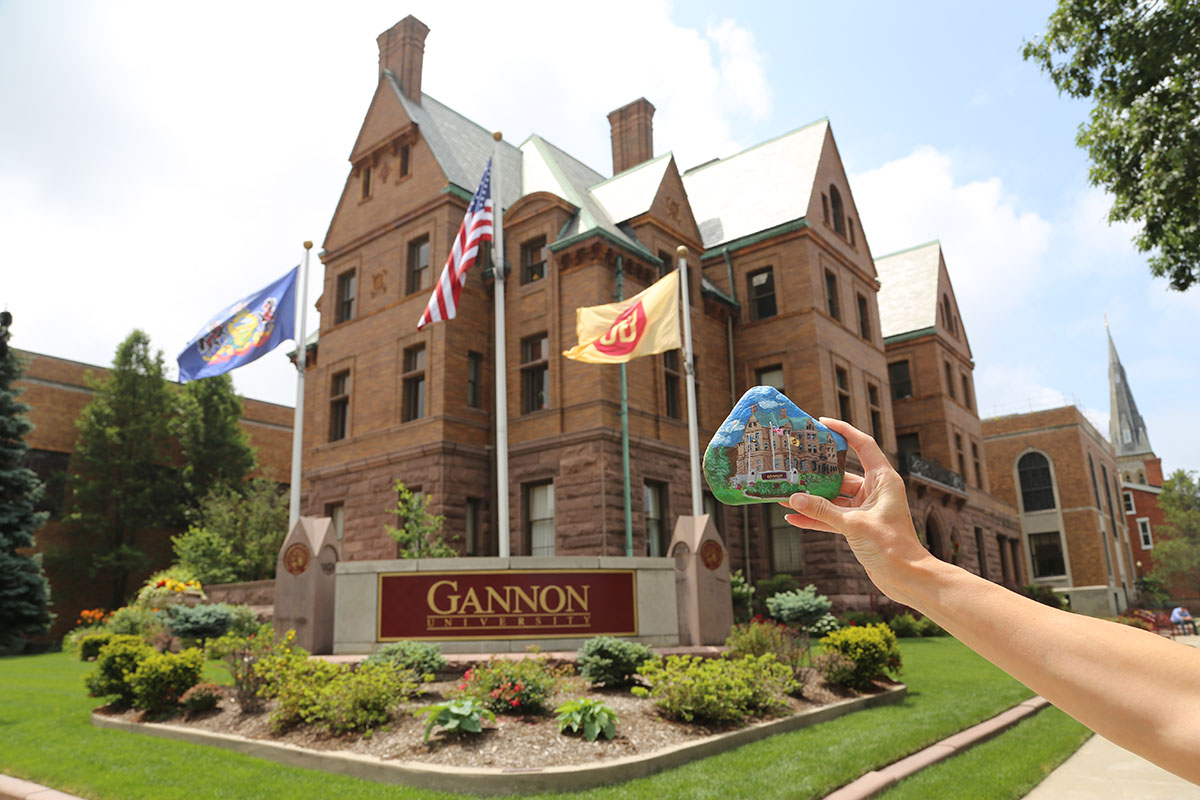During my freshman year, I took Theater and Culture with Fr. Shawn Clerkin. In that class we learned about different functions of art. One of those functions is therapy. While many plays and other works of theater have a therapeutic effect for the audience members, music and song lyrics also have the potential to be therapeutic.
I have to admit, song lyrics can be very therapeutic. There are many songs I listen to, and it helps me make through many tough times including stress, anxiety, toxic friends, death, heartbreak, and much more. These tough times are part of life, but music can help us get through them.
Because I wanted to learn more about song lyrics as a form of therapy, I decided to interview Fr. Shawn Clerkin about this idea.
Clerkin said that when we look at art in our Liberal Studies Fine Arts courses, we look at how art works for both artists and for audiences. He said, “For many, art is therapeutic, meaning it has healing properties. An artist can be healed by engaging the creative spirit, and using resources to bring something new into being. Sometimes specific problems or challenges can be explored by the artist, for example, personal challenges and life difficulties for playwrights and actors.”
As a theater artist, a playwright, and an audience member, I realized that my work has helped me therapeutically as an artist, and watching other people’s work can be therapeutic as well.
Shawn said that audiences can be lifted from sadness by being exposed to certain works of art. Audience members could also be brought to tears through empathy with images created by artists. With art allowing people to explore their issues, there are always songs with certain lyrics that resonate with us. Clerkin uses one of his favorite albums, Alanis Morissette’s 1995 album “Jagged Little Pill” as an example.
Shawn explained the similarities using Alanis Morissette’s album “Jagged Little Pill” as an example. “Anyone who has ever gone through a difficult relationship and break-up will recognize the pain, the loneliness, the anger, and ultimately, the survival of that kind relationship in her songs and lyrics,” said Clerkin, “It won the Grammy for Album of the Year, and earned it with its honesty in songwriting and performance, and also through the sympathy and empathy that listeners experienced when they heard the album. What’s amazing is that two decades later, it still has the same power to transform an audience member.”
This makes me ask one question. How are song lyrics as a form of therapy similar to theater as a form of therapy?
Clerkin has written both have written song lyrics for theater adaptations of famous stories including “The Legend of Sleepy Hollow”, Jane Austen’s, “Love and Friendship”, and “Rapunzel.” He said, “The writing of a lyric for musical theatre reveals inner emotions of a character, and by revealing those inner, often hidden, emotions, I have had an opportunity to both feel for someone else, but also feel as someone else.”
Clerkin pointed out that in theater actors present character who, while not themselves, are indeed “selves.” “In both, creative artists attempt to tap into those emotions and experiences which provide opportunity to better understand the human condition. They both try to release in a listener or audience similar emotions.” This release of emotions has been addressed by the Greek philosopher Aristotle. “Purgation, according to Aristotle, is necessary for humans so that our ability to feel for others, and to feel emotions ourselves. We need to exercise these gifts of empathy and sympathy or we may lose temporarily lose them,” said Clerkin.
Song lyrics help us release emotions that trouble us, and that is why we found certain songs that help us so appealing. This release of emotions due to art has been mentioned by Aristotle.
Below is a playlist of many songs that have helped me through tough times. It is full of songs that have upheld the function of art as a form of therapy.





